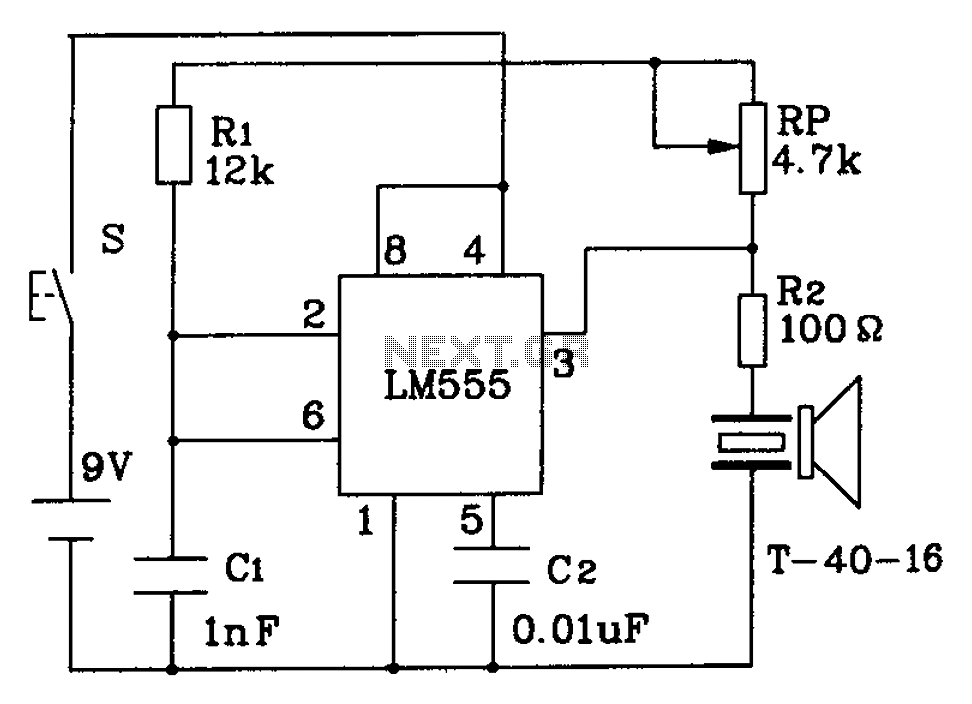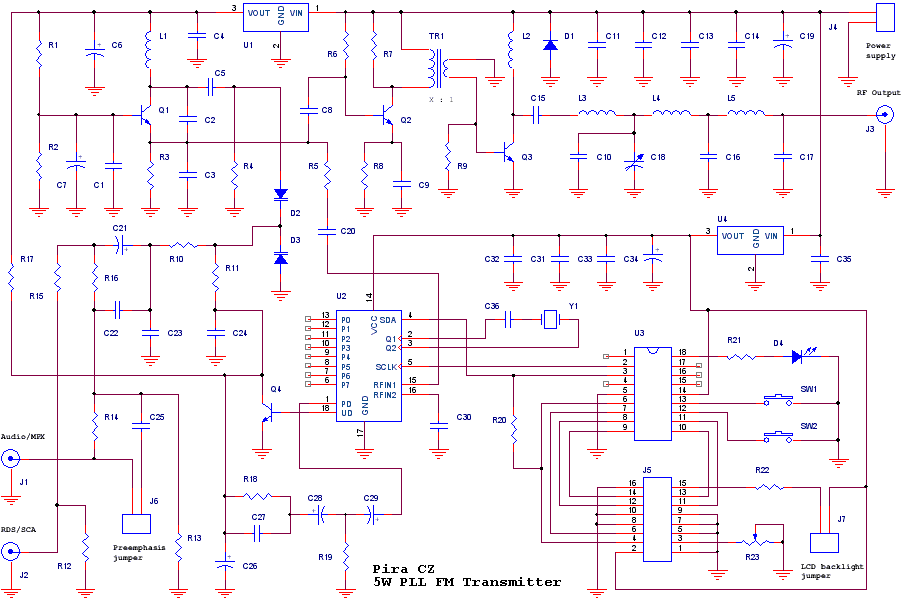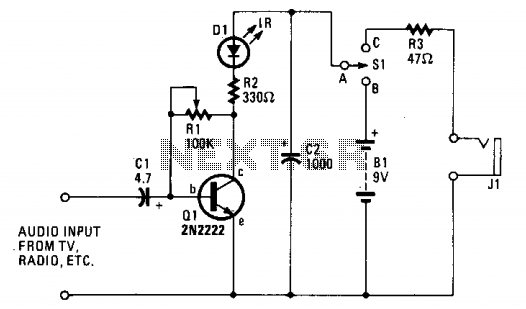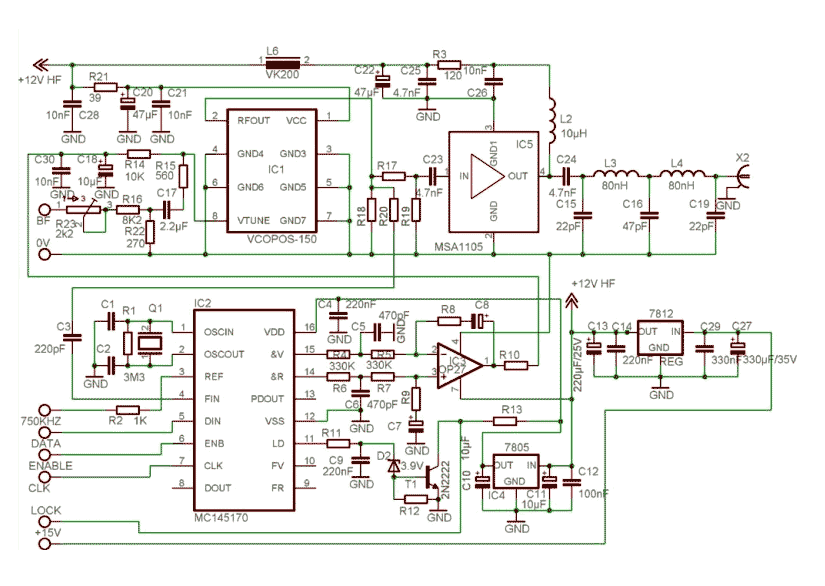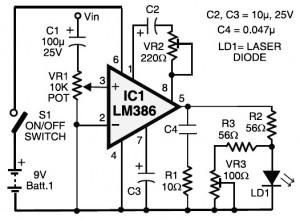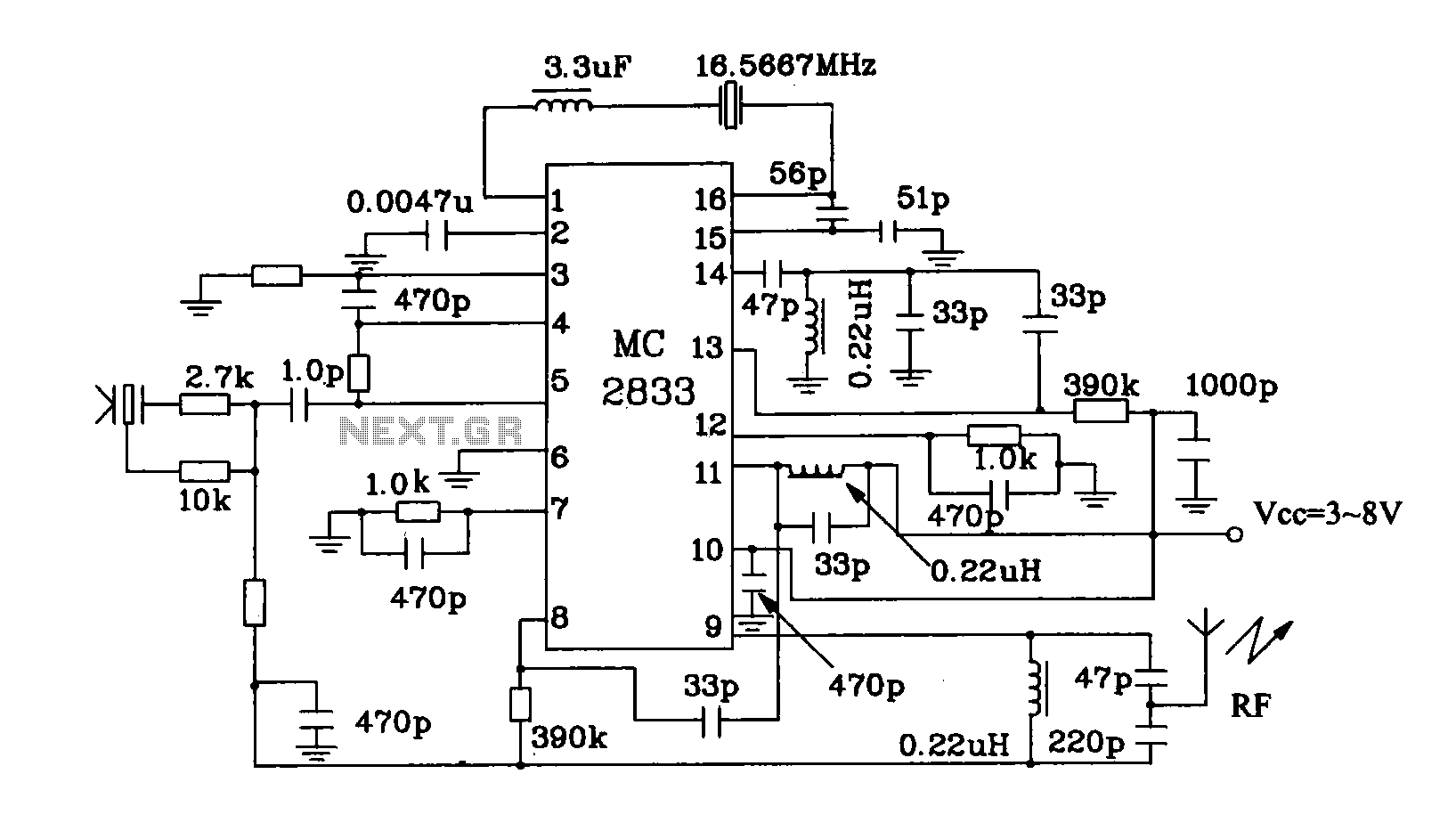
200mW FM transmitter
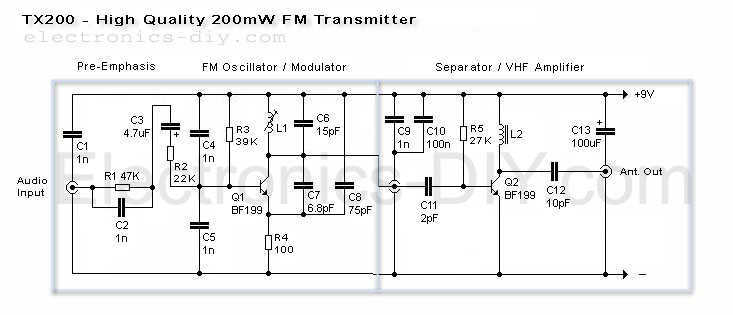
Here is the latest and greatly improved TX200 VFO/VCO FM transmitter. The most versatile transmitter to date that can be turned into high fidelity stereo PLL based 200mW FM transmitter. It is a perfect circuit for transmitting your music around the house and yard. TX200 uses only two coils; one in the oscillator and the other one in the 200mW VHF amplifier so it should be fairly easy for anyone to build. It also includes built-in pre-emphasis and C5 for enhanced sound quality. While assembling the transmitter care must be taken to make sure that C1 is directly connected to L1 and C9 to L2. These caps eliminate the distortions from the DC supply and improve the sound quality greatly. 9V voltage supply is also very important because it provides the exact amount of current to Q1 to produce loud and clear sound quality. More: If you want to use Phase Locked Loop (PLL) to digitally tune the frequency of TX200 then you will need to make small changes to the transmitter's oscillator. Theoretically, change original variable frequency oscillator (VFO) to voltage controlled osc
The TX200 VFO/VCO FM transmitter is designed to be a compact and efficient solution for FM transmission, particularly for audio applications such as music broadcasting within a localized area. The circuit operates on a 9V power supply, which is critical for maintaining the performance of the transistor Q1, ensuring that it delivers sufficient current for optimal audio output.
The architecture of the TX200 includes a variable frequency oscillator (VFO) that can be modified to a voltage-controlled oscillator (VCO) when implementing a Phase Locked Loop (PLL) for frequency stabilization and precision tuning. This modification allows for enhanced control over the transmission frequency, making it suitable for applications requiring exact frequency settings.
The transmitter utilizes two inductors (coils) – one located in the oscillator circuit and the second in the 200mW VHF amplifier. This design not only simplifies the construction process but also minimizes component count, making the circuit accessible for builders of varying skill levels.
Key components include capacitors C1 and C9, which are crucial for filtering and stabilizing the power supply. These capacitors are strategically placed to connect directly to the inductors L1 and L2, respectively. Their primary function is to reduce distortion caused by fluctuations in the DC supply, thereby enhancing overall sound quality. Additionally, the inclusion of capacitor C5 contributes to pre-emphasis, a technique used to improve signal-to-noise ratio and audio fidelity.
In summary, the TX200 VFO/VCO FM transmitter is a versatile and efficient circuit that provides high-fidelity audio transmission capabilities. Its straightforward design and the option for PLL integration make it an excellent choice for hobbyists and professionals alike, aiming to broadcast audio signals effectively within a limited range.Here is the latest and greatly improved TX200 VFO/VCO FM transmitter. The most versatile transmitter to date that can be turned into high fidelity stereo PLL based 200mW FM transmitter. It is a perfect circuit for transmitting your music around the house and yard. TX200 uses only two coils; one in the oscillator and the other one in the 200mW VHF amplifier so it should be fairly easy for anyone to build.
It also includes built-in pre-emphasis and C5 for enhanced sound quality. While assembling the transmitter care must be taken to make sure that C1 is directly connected to L1 and C9 to L2. These caps eliminate the distortions form the DC supply and improve the sound quality greatly. 9V voltage supply is also very important because it provides the exact amount of current to Q1 to produce loud and clear sound quality.
If you want to use Phase Locked Loop (PLL) to digitally tune the frequency of TX200 then you will need to make small changes to the transmitter`s oscillator. Theoretically, change original variable frequency oscillator (VFO) to voltage controlled osc 🔗 External reference
The TX200 VFO/VCO FM transmitter is designed to be a compact and efficient solution for FM transmission, particularly for audio applications such as music broadcasting within a localized area. The circuit operates on a 9V power supply, which is critical for maintaining the performance of the transistor Q1, ensuring that it delivers sufficient current for optimal audio output.
The architecture of the TX200 includes a variable frequency oscillator (VFO) that can be modified to a voltage-controlled oscillator (VCO) when implementing a Phase Locked Loop (PLL) for frequency stabilization and precision tuning. This modification allows for enhanced control over the transmission frequency, making it suitable for applications requiring exact frequency settings.
The transmitter utilizes two inductors (coils) – one located in the oscillator circuit and the second in the 200mW VHF amplifier. This design not only simplifies the construction process but also minimizes component count, making the circuit accessible for builders of varying skill levels.
Key components include capacitors C1 and C9, which are crucial for filtering and stabilizing the power supply. These capacitors are strategically placed to connect directly to the inductors L1 and L2, respectively. Their primary function is to reduce distortion caused by fluctuations in the DC supply, thereby enhancing overall sound quality. Additionally, the inclusion of capacitor C5 contributes to pre-emphasis, a technique used to improve signal-to-noise ratio and audio fidelity.
In summary, the TX200 VFO/VCO FM transmitter is a versatile and efficient circuit that provides high-fidelity audio transmission capabilities. Its straightforward design and the option for PLL integration make it an excellent choice for hobbyists and professionals alike, aiming to broadcast audio signals effectively within a limited range.Here is the latest and greatly improved TX200 VFO/VCO FM transmitter. The most versatile transmitter to date that can be turned into high fidelity stereo PLL based 200mW FM transmitter. It is a perfect circuit for transmitting your music around the house and yard. TX200 uses only two coils; one in the oscillator and the other one in the 200mW VHF amplifier so it should be fairly easy for anyone to build.
It also includes built-in pre-emphasis and C5 for enhanced sound quality. While assembling the transmitter care must be taken to make sure that C1 is directly connected to L1 and C9 to L2. These caps eliminate the distortions form the DC supply and improve the sound quality greatly. 9V voltage supply is also very important because it provides the exact amount of current to Q1 to produce loud and clear sound quality.
If you want to use Phase Locked Loop (PLL) to digitally tune the frequency of TX200 then you will need to make small changes to the transmitter`s oscillator. Theoretically, change original variable frequency oscillator (VFO) to voltage controlled osc 🔗 External reference
